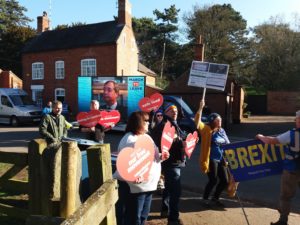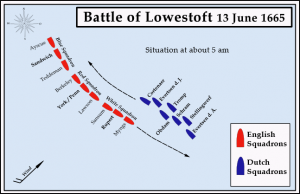 (I tried to write a blog post about the March for Leave, and it’s ended up being about 3,500 words. Also available: part one, part two and part three. But this is the best bit, where I finally get to the point and judge the marches)
(I tried to write a blog post about the March for Leave, and it’s ended up being about 3,500 words. Also available: part one, part two and part three. But this is the best bit, where I finally get to the point and judge the marches)
Settling the issues that we face as a country through the medium of hiking makes as much sense as anything. Given that Tory MPs have only just received training on what a customs union is, picking whether to leave or remain based on how good each side’s marches were is no less arbitrary than Parliament.
The Put it to the People March took place in London on March 23rd, and involved up to a million people walking through a small area of central London. The March to Leave was a hardier affair, travelling from Sunderland to London over the course of 16th March to 29th March, arriving in London to what was expected to be Brexit day but wasn’t. Both sides have mocked each other, but which one was better?
I am actually the best placed person in the world to answer this question. I’ve lectured on Brexit and hiking; and I’m a pretty keen hiker myself. I might be partisan, but I can promise to be unbiased – hiking is more important to me than the political fate of this nation.
When I attended the March to Leave in Sutton Bonnington, there was serious shade thrown at the March to Remain as being an easy stroll through London. While Remain-Twitter mocked the March to Leave’s smaller numbers, it was never intended to be a mass protest, with a limited capacity of core marchers. And attacks on the charge to the walkers missed the point: £50 was a very fair charge for accomodation and two meals a day, while preventing the march places being taken by spoof sign-ups.
A lot of energy went into mocking the March to Leave. I saw it referred to as the ‘Gammonball Run’, which sounds funny when you first hear it – but then you think about it for a second, and realise it’s a shit pun. The Guardian got some good quotes in their article on the march (“I don’t want my grandchildren being conscripted by an EU army likely led by the Germans.” LOL) but they were never going to be supportive. The march’s entire website was soon copied and rewritten with massive snark by remain campaign Led by Donkeys – a depressing and juvenile contrast to their clever billboard stunts. I do wonder how effective this scorn is, beyond amusing remainers and boosting social media page impressions.
The Leave walk also faced a challenge from nature, with appalling weather, but they kept going. Richard Tice, the man in charge, was quoted in the guardian, “We showed true grit. You softies in the guardian would’ve delayed it a day but we pushed on, we had hundreds out it was amazing.”
 As if no guardian reader or journalist has ever done a proper hike, right? Richard Tice cannot contemplate his grand act without comparing it to the other side. Rich, please: I read the Guardian, and I’ve kept walking in some really grim conditions. You wouldn’t believe the grit I showed crawling up Pen-y-ghent in a storm. I had a great time, and it never occurred to me to compare it to people I know who plan their walks for more hospitable months of the year.
As if no guardian reader or journalist has ever done a proper hike, right? Richard Tice cannot contemplate his grand act without comparing it to the other side. Rich, please: I read the Guardian, and I’ve kept walking in some really grim conditions. You wouldn’t believe the grit I showed crawling up Pen-y-ghent in a storm. I had a great time, and it never occurred to me to compare it to people I know who plan their walks for more hospitable months of the year.
But there are rules about hiking.
Let’s set aside the things like numbers and distance. My sympathies are with the March to Leave, as far as pedestrian feats goes. But what does it take to say you’ve ‘done’ a hike or a trail? have you ‘done’ the trail if you don’t do it in one go (“through-hiking”)? What if you’re using a baggage service and not carrying your own gear? Are you allowed to get into cars during the hike? If you miss a section through getting lost, do you need to go back to it?
Some people are very firm on these rules. Just look at Wikipedia’s article on through-hiking: Certain thru-hikers, referred to as “purists,” take this emphasis on continuity to obsessive lengths. Some touch or kiss every blaze of white paint along the trail, while others carefully line up their shoes, like Japanese slippers, in the precise spot they entered a lean-to, so as to know exactly where to resume hiking the next day.
But there are other things about hiking than just the walking. On the Pennine Way last year, one of my favourite things was meeting people along the way. We found ourselves drinking with someone who was hiking between jobs, having just finished working for a pro-Brexit think tank. I didn’t feel like ruining a hike by starting a row – some things are more important than political point-scoring. This person arrived at one pub three minutes after they stopped selling food – so I shared some of what I’d ordered. Hanging out with someone I disagree with, who I wouldn’t normally be speaking to, that was a pretty good way to spend an evening. Maybe, what we need when this is all over is a March for Moving Beyond the Brexit Fiasco.
There are rules about hiking – very definite rules. Some people condemned the March to Leave for not walking point-to-point, with buses between sections. But the thing about the rules for hiking is, you pick them for yourself. The big rule is, you should be happy about the hike you’ve done. It’s not a competitive event. Don’t compare your walk to other people’s just walk, breathe, and enjoy the world.
Which is why it’s so weird that the March to Leave is so insistent on comparing itself to the March to Remain. The March for Leave should have been a grand gesture, a celebration of… something. It was self-evidently an interesting and worthwhile project, and the people on that walk obviously thought it was worth doing.
The fact that Richard Tice had to continually defend the March to Leave against the Remain March suggested he has no real confidence in it. Just the same as Leave keeps defending their stupid, shabby and failed project of Brexit, when it’s success ought to be self-evident by this point. The depressing thing about the March to Remain, and the entire Brexit project, is that nobody seems to believe in it. Which turns them both into mindless, pointless fucking slogs.







